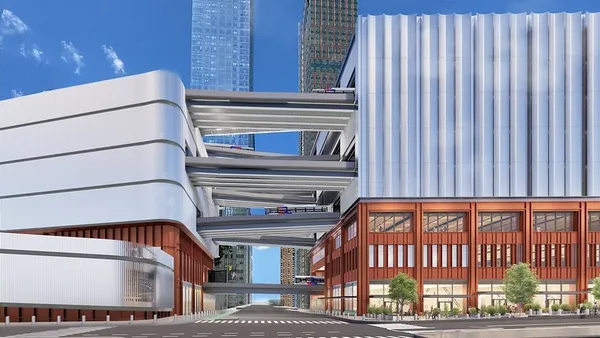Dive Brief:
- The New York City's Mayor's Office of Recovery & Resiliency (ORR) has unveiled the city's first climate resiliency guide for construction of capital projects, according to Fast Company.
- "Climate Resiliency Design Guidelines" is still in the draft stages but provides guidance for the city's agencies on how to reduce the impact of climate change-driven events like extreme heat and precipitation, flooding, storm surge, and sea-level rise as they carry out new projects.
- Some examples of the resilient design adjustments that designers and engineers could use include extra shading, permeable pavement and bioswales, cool and green roofs, living walls, passive cooling design and flood protection systems.
Dive Insight:
The city's building and zoning codes still take precedence over the guidelines, and each city agency will decide whether to implement the ORR's suggestions. The Port Authority of New York and New Jersey issued its own set of climate resiliency guidelines in 2015.
Architects and engineers have long played a role in the attempt to mitigate the effects of climate change on coastal buildings as well as on their residents and businesses.
Kristen Hall, an urban designer and planner with Perkins+Will in San Francisco, told Construction Dive in March that, in the instance of sea-level rise, rather than throwing up protective systems that separate a city's residents from the water, practical yet beautiful structures can be built to let the population still enjoy coastal areas while protecting them at the same time.
Alex Wilson, president of the Resilient Design Institute in Brattleboro, VT, suggested that the future of resiliency, while maintaining its dedication to preserving existing buildings, could be as simple as constructing new buildings out of harm's way — a shift that can be helped along by insurance company policies that offer discounts for those that adopt those practices.










